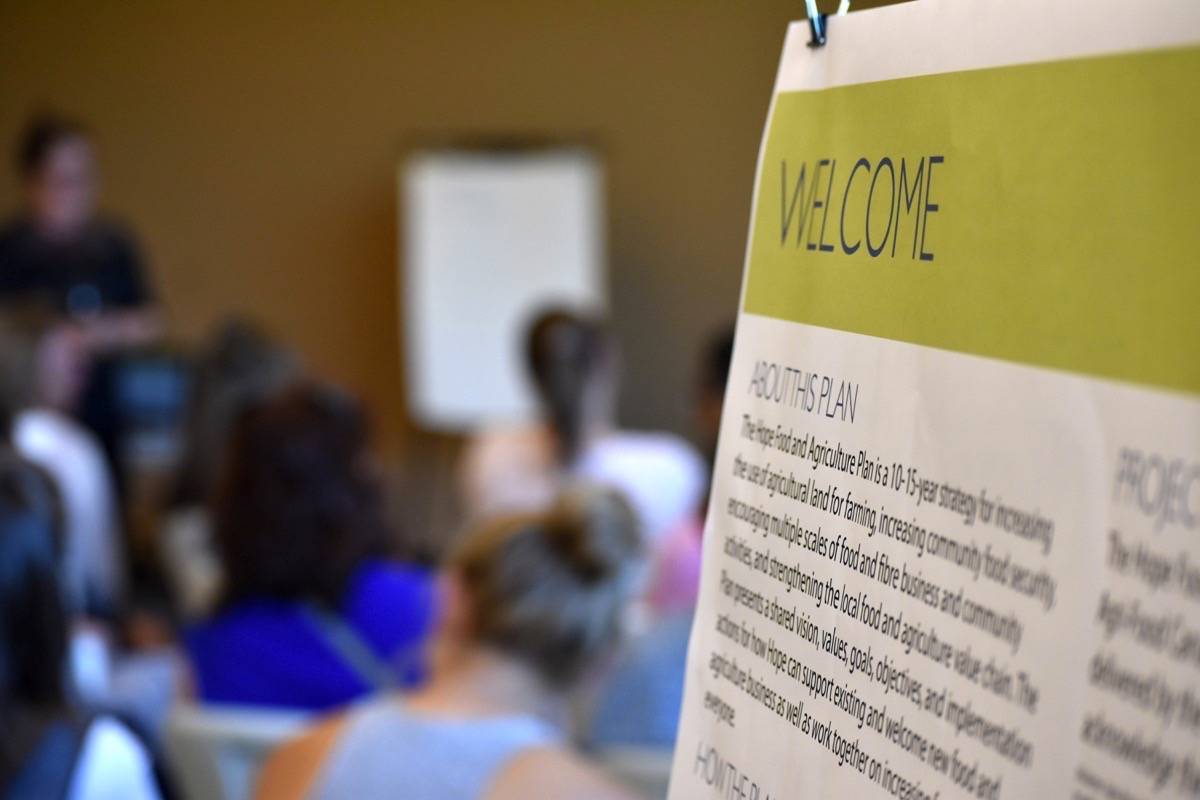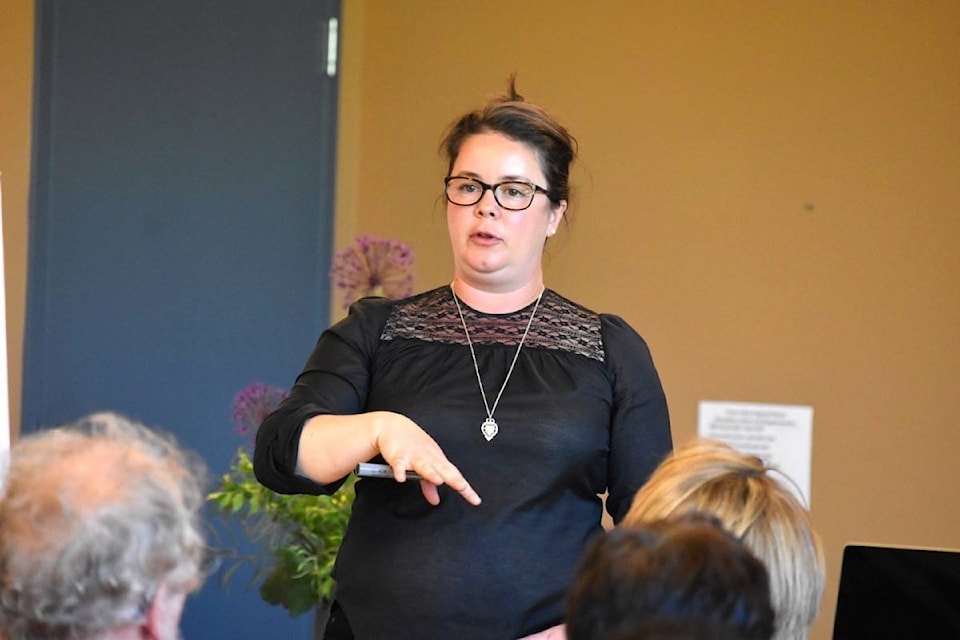People in Hope are acutely food insecure and a new food and agriculture plan is being finalized to address the issue.
“The level of food insecurity that is here in Hope, I had to do a double take at the numbers because I’ve never seen numbers like that, it’s heartbreaking to think about it. But it’s a very real and acute issue,” Janine de la Salle, food planner and co-author of a new community food plan said.
Of all the communities she has worked in, de la Salle said Hope faces the most challenges and also a huge opportunity as the community is a ‘blank slate’ for food planning without too many established interests or rivalries. She presented the 10- to 15-year food and agriculture plan at a public meeting Tuesday at the Hope recreation centre, with project partners Stephanie Hooker from Advantage Hope and Brittany Ekelund from the District of Hope, to a group of 15 residents.
Food security, as la Salle defines it, is to have the ability to access culturally appropriate and healthy food. In Hope, what data from Fraser Health shows is that some skip certain meals, eat inexpensive and unhealthy foods or simply go hungry because they cannot afford to purchase food.
“Food insecurity it comes down, a lot of time, to income. And you don’t have enough household income to actually purchase food,” she said. “So you start to use the food bank services, emergency food services that are intended for short-term relief but the way that our food system is right now some people need that support, sometimes multiple generations.”
The food and agriculture plan aims to address this food insecurity, as well as support the growth of a new industry of small lot farmers, processing, value-added activities and sales of food and agricultural products in Hope.
“It’s to say we can do more as a community: we can do more to create food assets, we can do more to educate the whole community on different things to do with food, we can work better with social service providers to try and reclaim some of the perfectly good food that is disregarded,” de la Salle said of the plan’s aims.
One example de la Salle gave was a community cooler where residents who harvest too many of a certain kind of fruit or vegetable in their garden can leave these and residents who need them can pick them up. Plans like this would also tackle the enormous food waste problem all communities in Canada face.
The 10- to 15-year strategy was a creative one by necessity, as Hope is a community with many small agricultural lots and much of it is underutilized.
Of all the land zoned by the district permitting agriculture, or under the Agricultural Land Reserve (ALR), 89 per cent is less than 4 hectares (10 acres) in size.
Of the 301 hectares (746 acres) of ALR land in Hope, only one third is being used. “The majority of that is mostly grasses, growing grasses, so lots of room to grow,” de la Salle said.
Stephanie Hooker said there will be a natural movement by farmers from the urban centres to relocate to Hope to use some of this underutilized ALR land.
“Hope is going to be a natural next step for a lot of urban farmers and artisan farmers, so let’s snag them. Let’s get that sector of the economy going and in the process, the food security situation will improve because we’ll have local producers,” she said.
The planning involved speaking with people working in the agriculture sector in Hope. Approximately 25 individuals and organizations gave feedback. One major challenge for many businesses was size: how to make enough money through food and agriculture activities to make it worthwhile to continue.
Other themes de la Salle heard from these individuals was interest in creating a mutually supportive culture, taking advantage of regional assets, food hubs and farmers markets and an interest in sustainability.
“It’s a really beautiful time in Hope because there’s this food collective and the community garden and Hope healthy communities, all these groups that are working really hard,” Hooker said.
“It’s also a really neat time because regionally right now, there’s a food hub being formed on the north side of the Fraser and there’s a food hub being formed on the south side of the Fraser and they’re both looking for ways to connect producers to retailers, to provide business incubation services for things like value-added processing and marketing, to support communities to build their own food hubs. So there’s never been a better time for Hope to get on board.”
The plan came up with so-called ‘quick starts’: things that could be done tomorrow that would kick-start the plan. This includes maintaining ALR land and avoiding subdivision in the ALR, studying food processing and processing infrastructure and potential locations for a business like this in Hope.
Some ‘big moves’ were also identified: these were high priority projects with a medium to high cost attached which Hope is not yet ready for. These included identifying and promoting locations suitable to a beer or other alcohol production facility, preparing for a Hope farmers market and starting a workshop series for those in the industry to learn practical skills.
The plan also looked at enabling actions such as creating a coordinator position to take on the working of the plan, and catalyst activities which included linking food producers, processors and artisans to opportunities within and outside of Hope.
The plan will now be finalized, with input from Tuesday’s meeting, and will be presented to council in June or July.
FACT FILE: Six goals of the Hope food and agriculture plan
Support small lot farming activities
Encourage ecologically responsible agriculture and related industry practices
Support growth in processing, value-added and sales activities for made in Hope products
Promote food and agricultural opportunities in Hope
Enable a diversity of learning environment for food, fiber, farming
Empower plan stewardship, governance and implementation
Is there more to this story?
news@hopestandard.com
Like us on Facebook and follow us on Twitter

